Fabrication and Analysis of Near-Field Electrospun PVDF Fibers with Sol-Gel Coating for Lithium-Ion Battery Separator
Abstract
1. Introduction
2. Materials and Methods
2.1. Solution Configuration
2.2. Fabrication of PVDF Fibers by Near-Field Electrospinning (NFES) Process
2.3. Preparation of PVDF Fiber-Membrane Separators by Sandwich Method
2.4. Sol-Gel Preparation and Coating on Substrates: A4 Paper, Rice Paper, Nonwoven Fabric, and Carbon Synthetic Fabric
2.5. Porosity Measurement
2.6. Thermal Stability Determination
2.7. Ion Conductivity Measurement
2.8. Electrochemical Stability Measurement
2.9. Cycle Performance Measurement
3. Results
3.1. Surface Analysis of PP Separator and PVDF Fiber-Membranes
3.2. Surface Analysis of A4 Paper, Rice Paper, Nonwoven Fabric, and Carbon Synthetic Fabric Coated with Sol-Gel
3.3. Thermal Stability Analysis of PP Separator and PVDF Fiber-Membranes
3.4. Thermal Stability Analysis of A4 Paper, Rice Paper, Nonwoven Fabric, and Carbon Synthetic Fabric Coated with Sol-Gel
3.5. Ion Conductivity Analysis of PP Separator and PVDF Fiber-Membranes
3.6. Ion Conductivity Analysis of A4 Paper, Rice Paper, Nonwoven Fabric, and Carbon Synthetic Fabric Coated with Sol-Gel
3.7. Redox Reactions of PP Separator and PVDF Fiber-Membranes
3.8. Redox Reactions of A4 Paper, Rice Paper, Nonwoven Fabric and Carbon Synthetic Fabric Coated with Sol-Gel
3.9. Cycle Performance of PP Separator and PVDF Fiber-Membranes
3.10. Cycle Performance of A4 Paper, Rice Paper, Nonwoven Fabric, and Carbon Synthetic Fabric Coated with Sol-Gel
4. Discussion
5. Conclusions
Author Contributions
Funding
Institutional Review Board Statement
Informed Consent Statement
Data Availability Statement
Acknowledgments
Conflicts of Interest
References
- Araki, K.; Sato, N. Chemical transformation of the electrode surface of lithium-ion battery after storing at high temperature. J. Power Sources 2003, 124, 124–132. [Google Scholar] [CrossRef]
- Shi, C.; Zhang, P.; Chen, L.; Yang, P.; Zhao, J. Effect of a thin ceramic-coating layer on thermal and electrochemical properties of polyethylene separator for lithium-ion batteries. J. Power Sources. 2014, 270, 547–553. [Google Scholar] [CrossRef]
- Ren, Q.Q.; Yu, F.D.; Zhang, S.W.; Yin, B.S.; Wang, Z.B.; Ke, K. Enhanced electrochemical performance by size-dependent SEI layer reactivation of NiCo2O4 anodes for lithium ion batteries. Electrochim. Acta 2019, 297, 1011–1017. [Google Scholar] [CrossRef]
- Orendorff, C.J.; Lambert, T.N.; Chavez, C.A.; Bencomo, M.; Fenton, K.R. Polyester separators for lithiumion cells: Improving thermal stability and abuse tolerance. Adv. Energy Mater. 2013, 3, 314–320. [Google Scholar] [CrossRef]
- Pan, L.; Wang, H.; Wu, C.; Liao, C.; Li, L. Tannic-acid-coated polypropylene membrane as a separator for lithium-ion batteries. ACS Appl. Mater. Interfaces 2015, 7, 16003–16010. [Google Scholar] [CrossRef] [PubMed]
- Xu, K. Nonaqueous liquid electrolytes for lithium-based rechargeable batteries. Chem. Rev. 2004, 104, 4303–4418. [Google Scholar] [CrossRef] [PubMed]
- Arora, P.; Zhang, Z. Battery separators. Chem. Rev. 2004, 104, 4419–4462. [Google Scholar] [CrossRef]
- Ihm, D.; Noh, J.; Kim, J. Effect of polymer blending and drawing conditions on properties of polyethylene separator prepared for Li-ion secondary battery. J. Power Sources 2002, 109, 388–393. [Google Scholar] [CrossRef]
- Zhang, J.; Liu, Z.; Kong, Q.; Zhang, C.; Pang, S.; Yue, L.; Wang, X.; Yao, J.; Cui, G. Renewable and superior thermal-resistant cellulose-based composite nonwoven as lithium-ion battery separator. ACS Appl. Mater. Interfaces 2013, 5, 128–134. [Google Scholar] [CrossRef]
- Jiang, F.; Nie, Y.; Yin, L.; Feng, Y.; Yu, Q.; Zhong, C. Core–shell-structured nanofibrous membrane as advanced separator for lithium-ion batteries. J. Membr. Sci. 2016, 510, 1–9. [Google Scholar] [CrossRef]
- Xiao, K.; Zhai, Y.; Yu, J.; Ding, B. Nanonet-structured poly (m-phenylene isophthalamide)–polyurethane membranes with enhanced thermostability and wettability for high power lithium ion batteries. RSC Adv. 2015, 5, 55478–55485. [Google Scholar] [CrossRef]
- Hao, J.; Lei, G.; Li, Z.; Wu, L.; Xiao, Q.; Wang, L. A novel polyethylene terephthalate nonwoven separator based on electrospinning technique for lithium ion battery. J. Membr. Sci. 2013, 428, 11–16. [Google Scholar] [CrossRef]
- Costa, C.M.; Silva, M.M.; Lanceros-Mendez, S. Battery separators based on vinylidene fluoride (VDF) polymers and copolymers for lithium ion battery applications. RSC Adv. 2013, 3, 11404–11417. [Google Scholar] [CrossRef]
- Sun, D.; Chang, C.; Li, S.; Lin, L. Near-field electrospinning. Nano Lett. 2006, 6, 839–842. [Google Scholar] [CrossRef]
- Fuh, Y.K.; Lien, L.C.; Chen, S.Y. High-throughput production of nanofibrous mats via a porous materials electrospinning process. J. Macromol. Sci. Part B 2012, 51, 1742–1749. [Google Scholar] [CrossRef]
- Xu, Q.; Kong, Q.; Liu, Z.; Wang, X.; Liu, R.; Zhang, J.; Yue, L.; Duan, Y.; Cui, G. Cellulose/polysulfonamide composite membrane as a high-performance lithium-ion battery separator. ACS Sustain. Chem. Eng. 2014, 2, 194–199. [Google Scholar] [CrossRef]
- Kong, Y.; Hay, J.N. The measurement of the crystallinity of polymers by DSC. Polymer 2002, 43, 3873–3878. [Google Scholar] [CrossRef]
- Liu, F.; Hashim, N.A.; Liu, Y.; Abed, M.M.; Li, K. Progress in the production and modification of PVDF membranes. J. Membr. Sci. 2011, 375, 1–27. [Google Scholar] [CrossRef]
- Cox, J.M.; Wright, B.A.; Wright, W.W. Thermal degradation of fluorine-containing polymers. Part I. Degradation in vacuum. J. Appl. Polym. Sci. 1964, 8, 2935–2950. [Google Scholar] [CrossRef]
- Du, C.H.; Xu, Y.Y.; Zhu, B.K. Plasticizer effect of dibutyl phthalate on the morphology and mechanical properties of hard elastic poly (vinylidene fluoride) fibers. J. Appl. Polym. Sci. 2009, 114, 3645–3651. [Google Scholar] [CrossRef]
- Van der Wal, A.; Mulder, J.J.; Gaymans, R.J. Fracture of polypropylene: The effect of crystallinity. Polymer 1998, 39, 5477–5481. [Google Scholar] [CrossRef]
- Barrow, D.A.; Petroff, T.E.; Sayer, M.B.A.Q.U. Thick ceramic coatings using a sol gel based ceramic-ceramic 0–3 composite. Surf. Coat. Technol. 1995, 76, 113–118. [Google Scholar] [CrossRef]
- Tiwari, S.K.; Sahu, R.K.; Pramanick, A.K.; Singh, R. Development of conversion coating on mild steel prior to sol gel nanostructured Al2O3 coating for enhancement of corrosion resistance. Surf. Coat. Technol. 2011, 205, 4960–4967. [Google Scholar] [CrossRef]
- Nyambo, C.; Wang, D.; Wilkie, C.A. Will layered double hydroxides give nanocomposites with polar or non-polar polymers? Polym. Adv. Technol. 2009, 20, 332–340. [Google Scholar] [CrossRef]
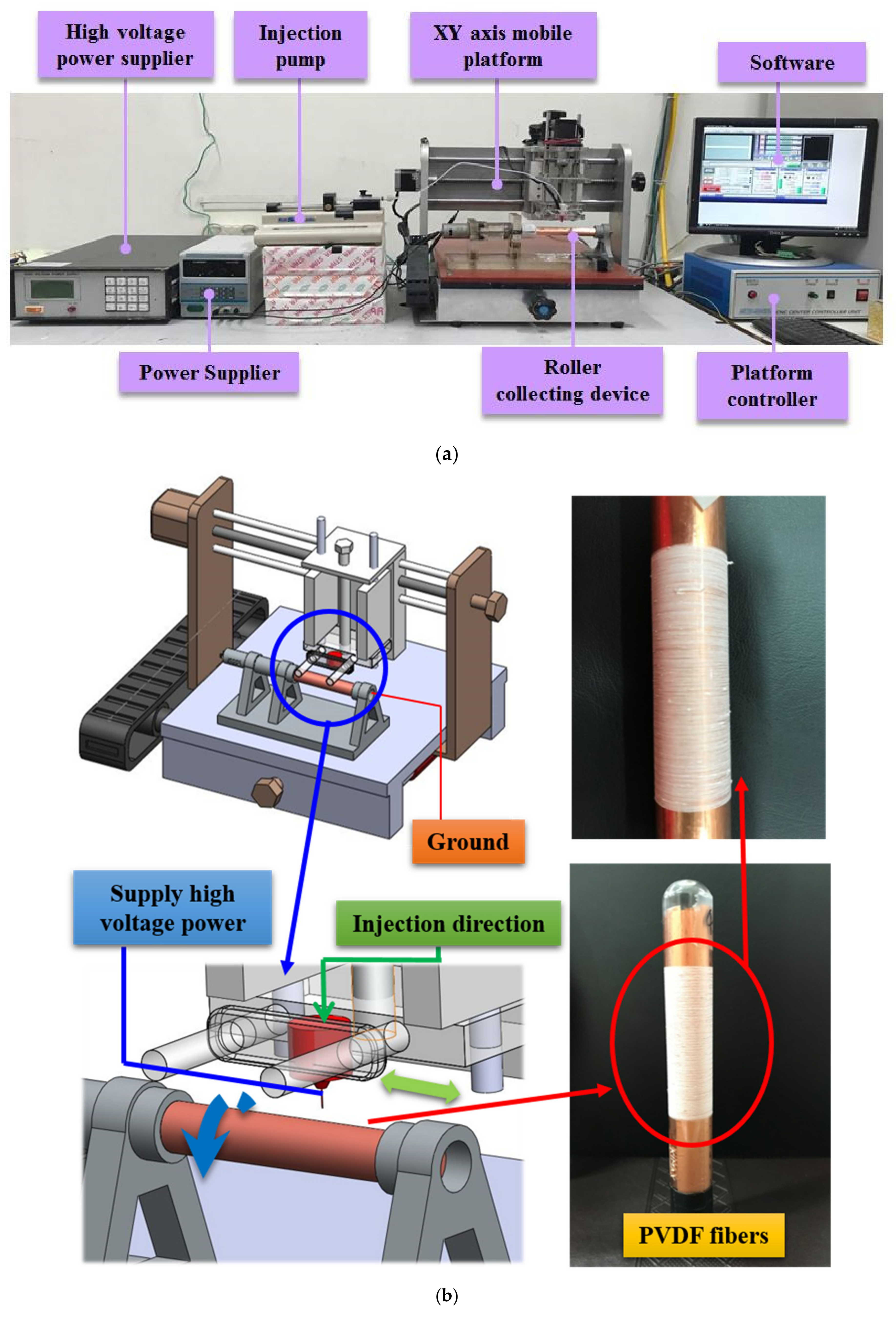

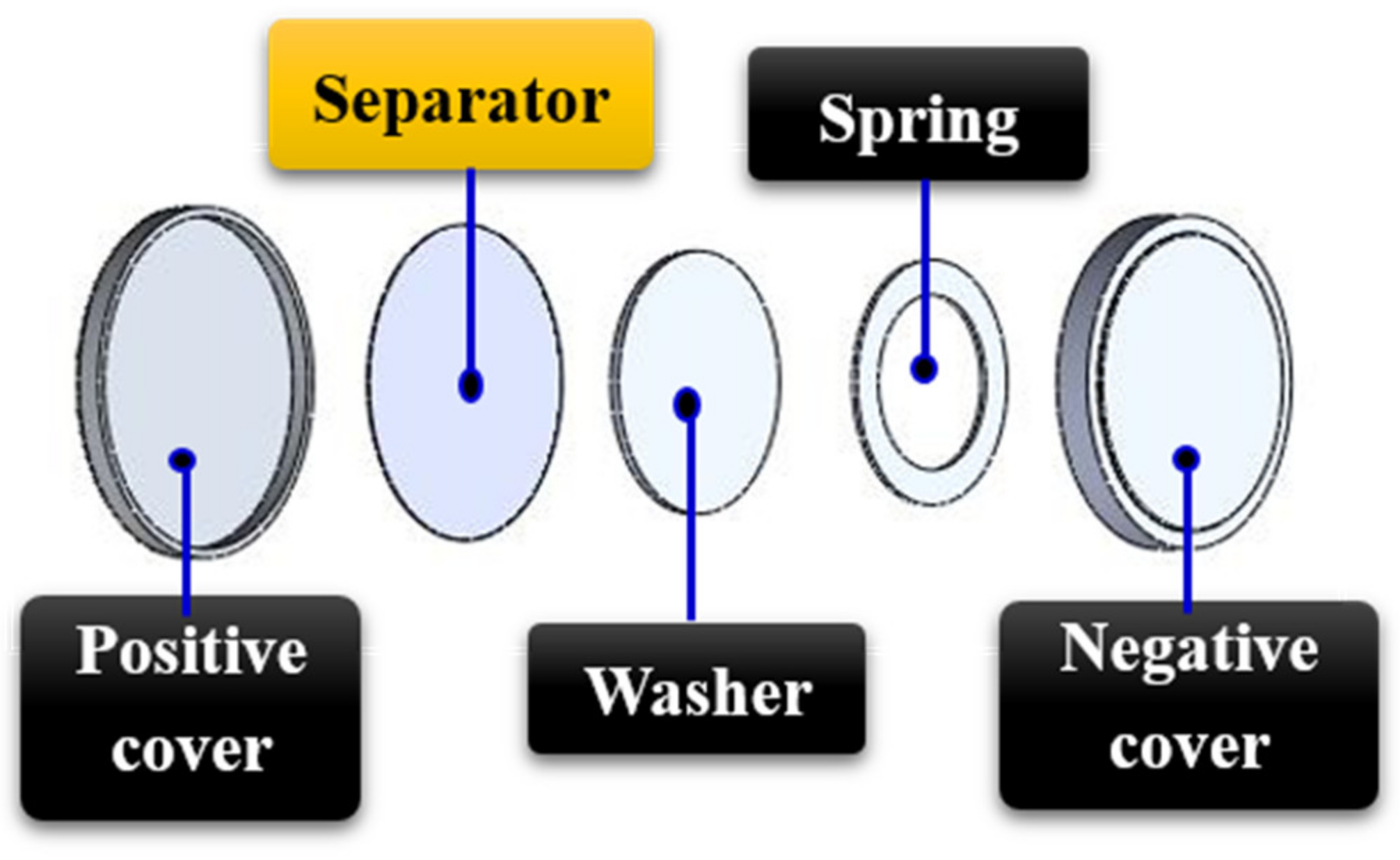
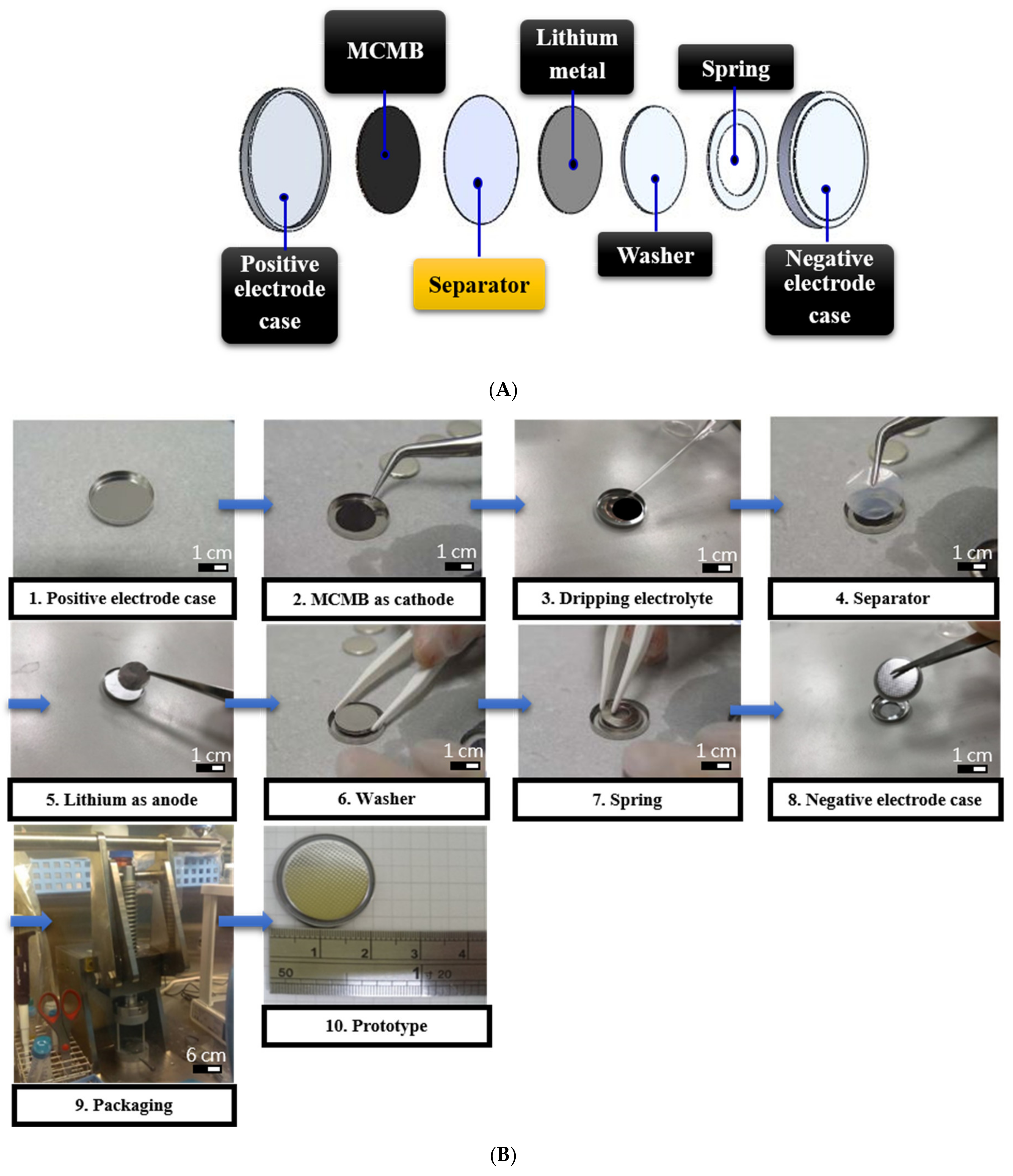
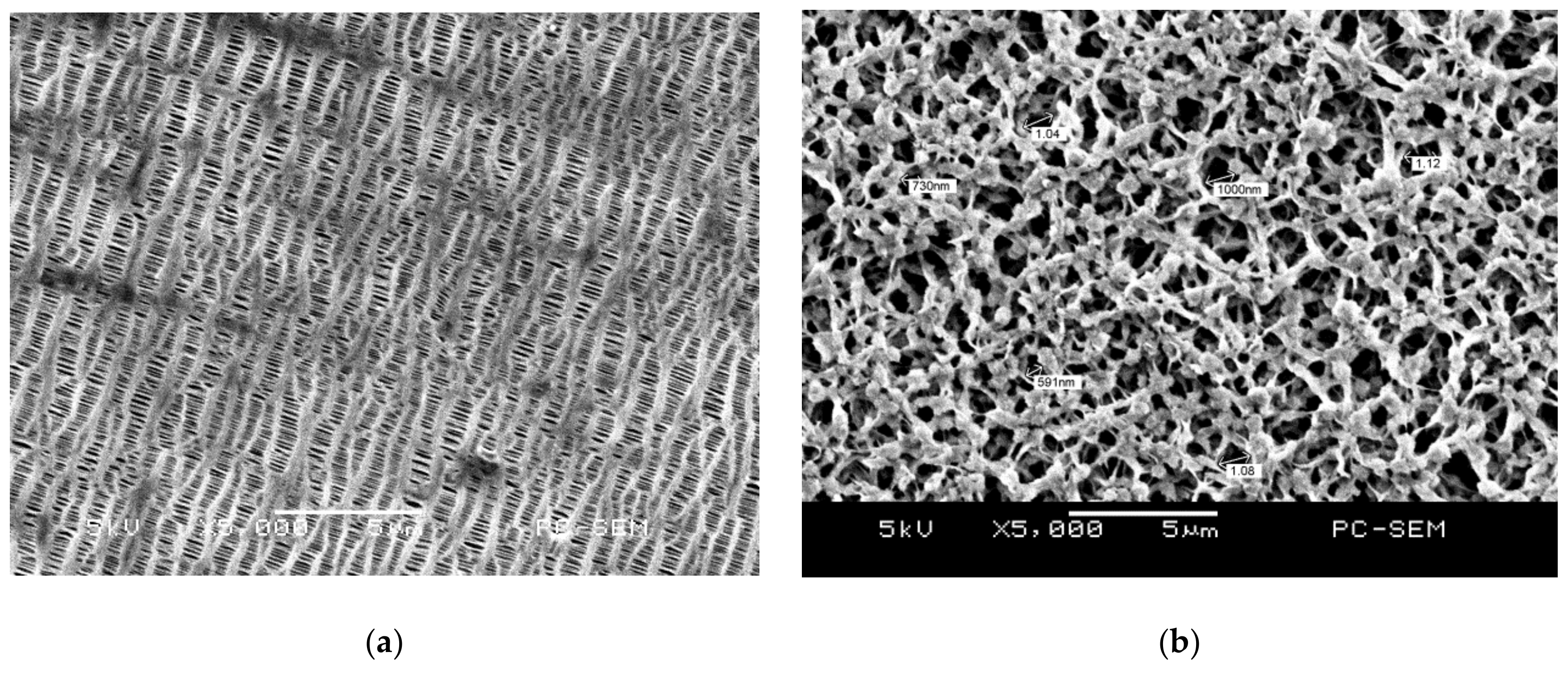
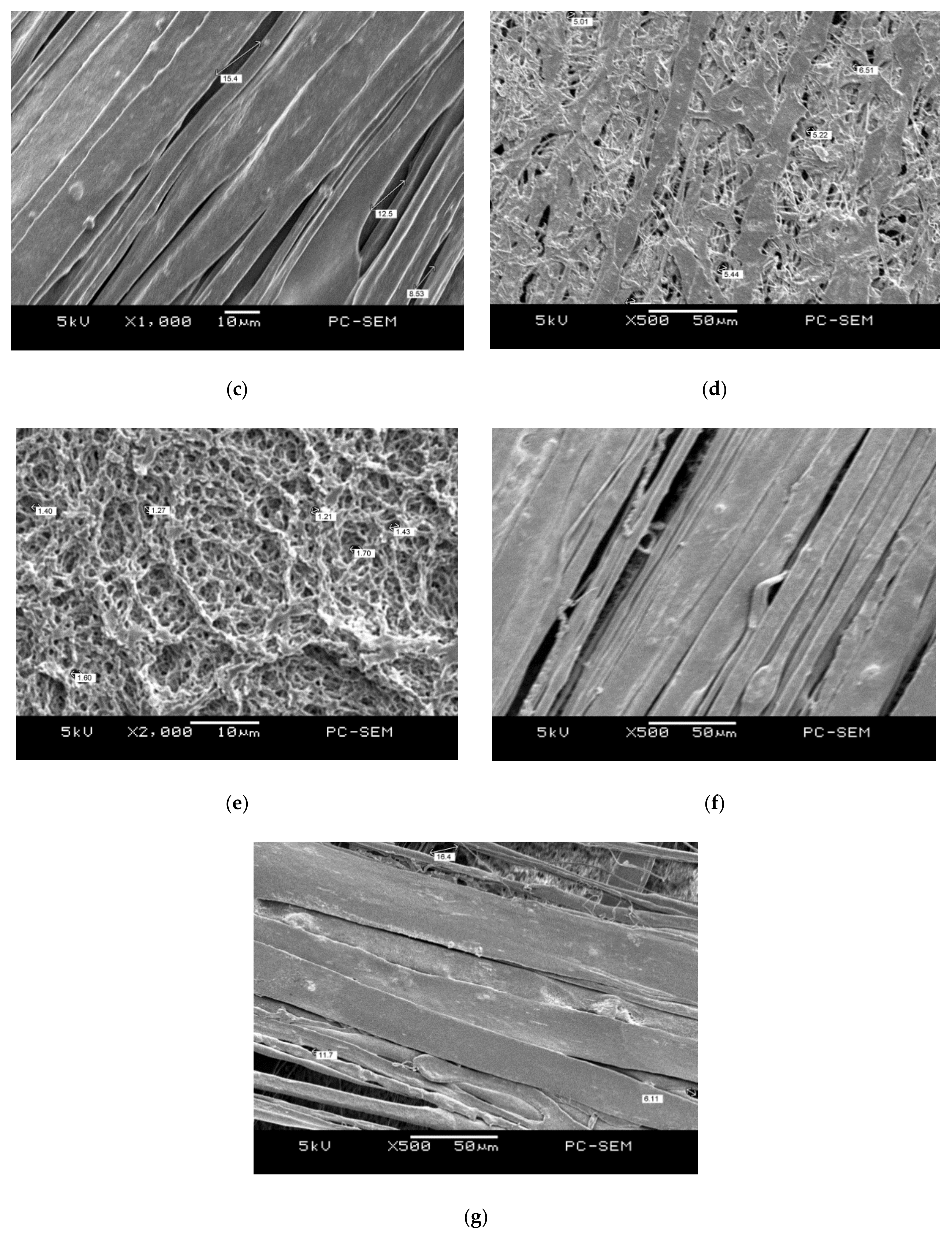
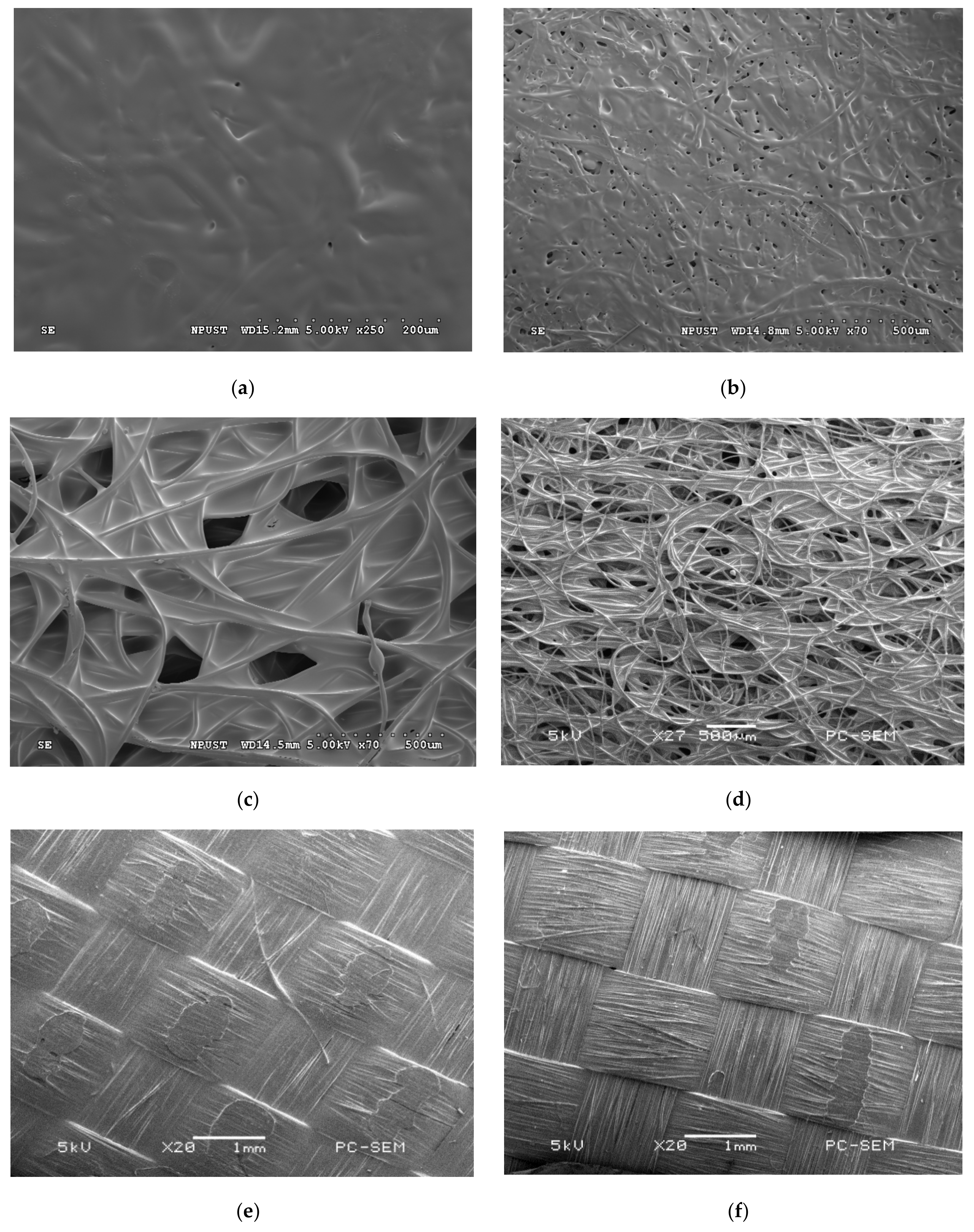
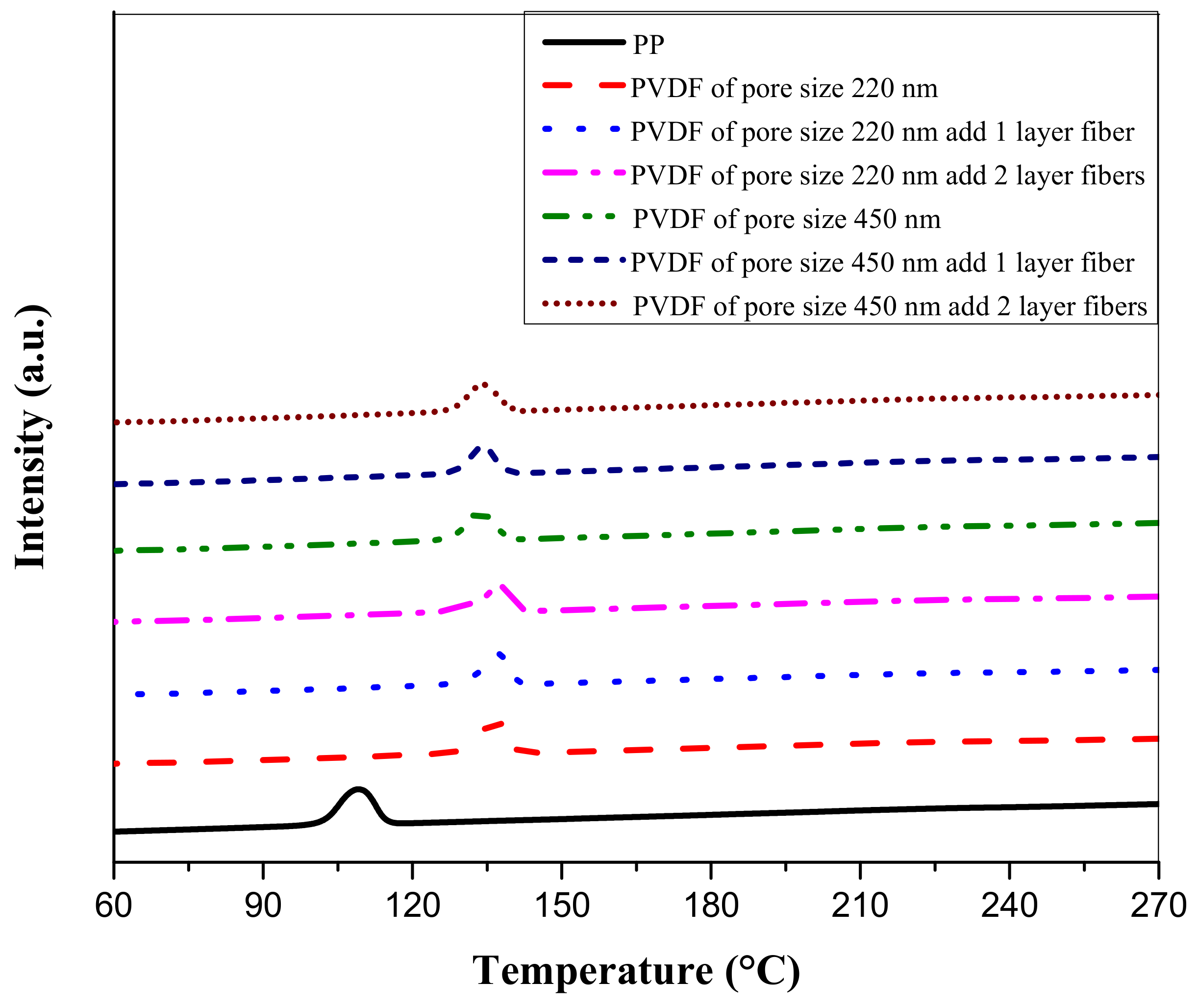
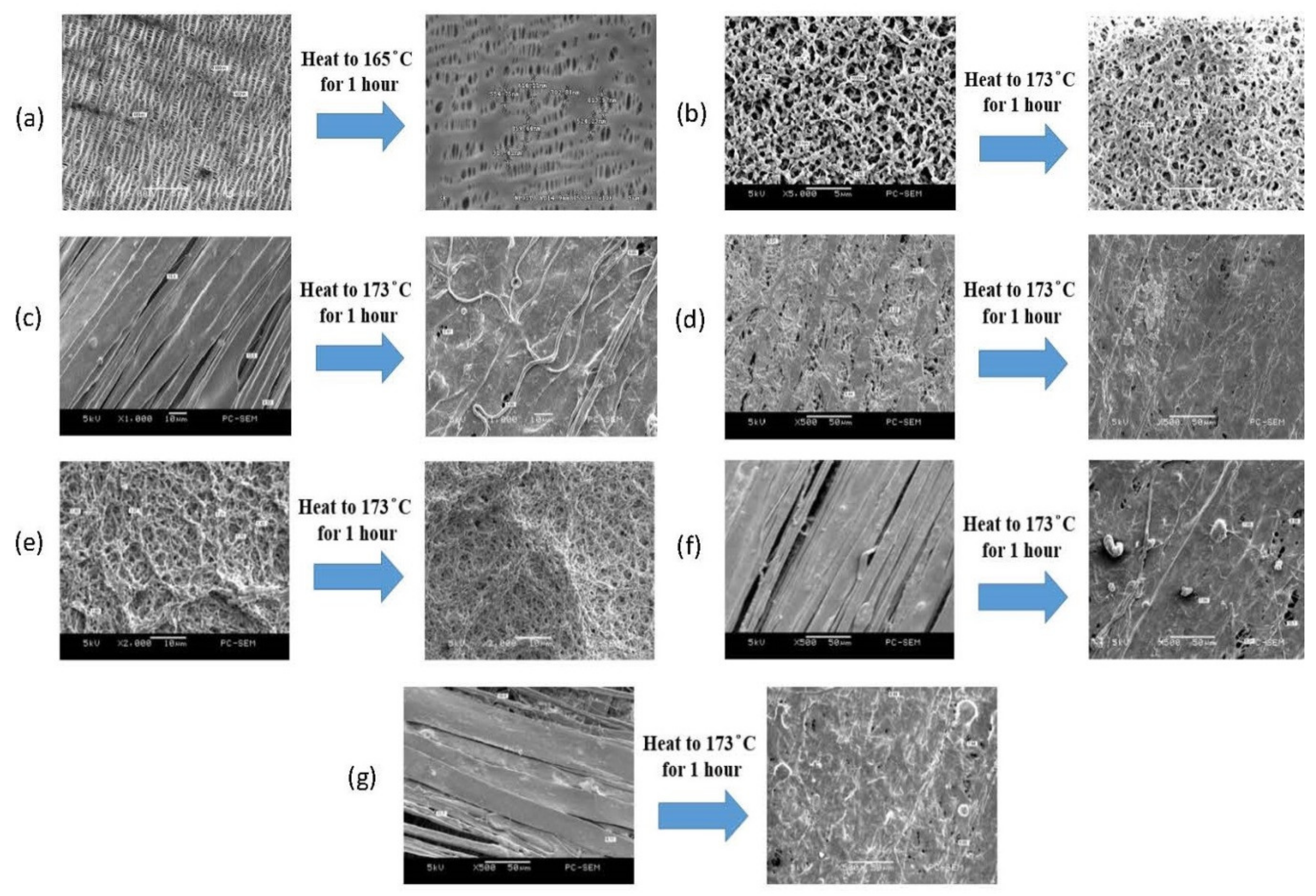
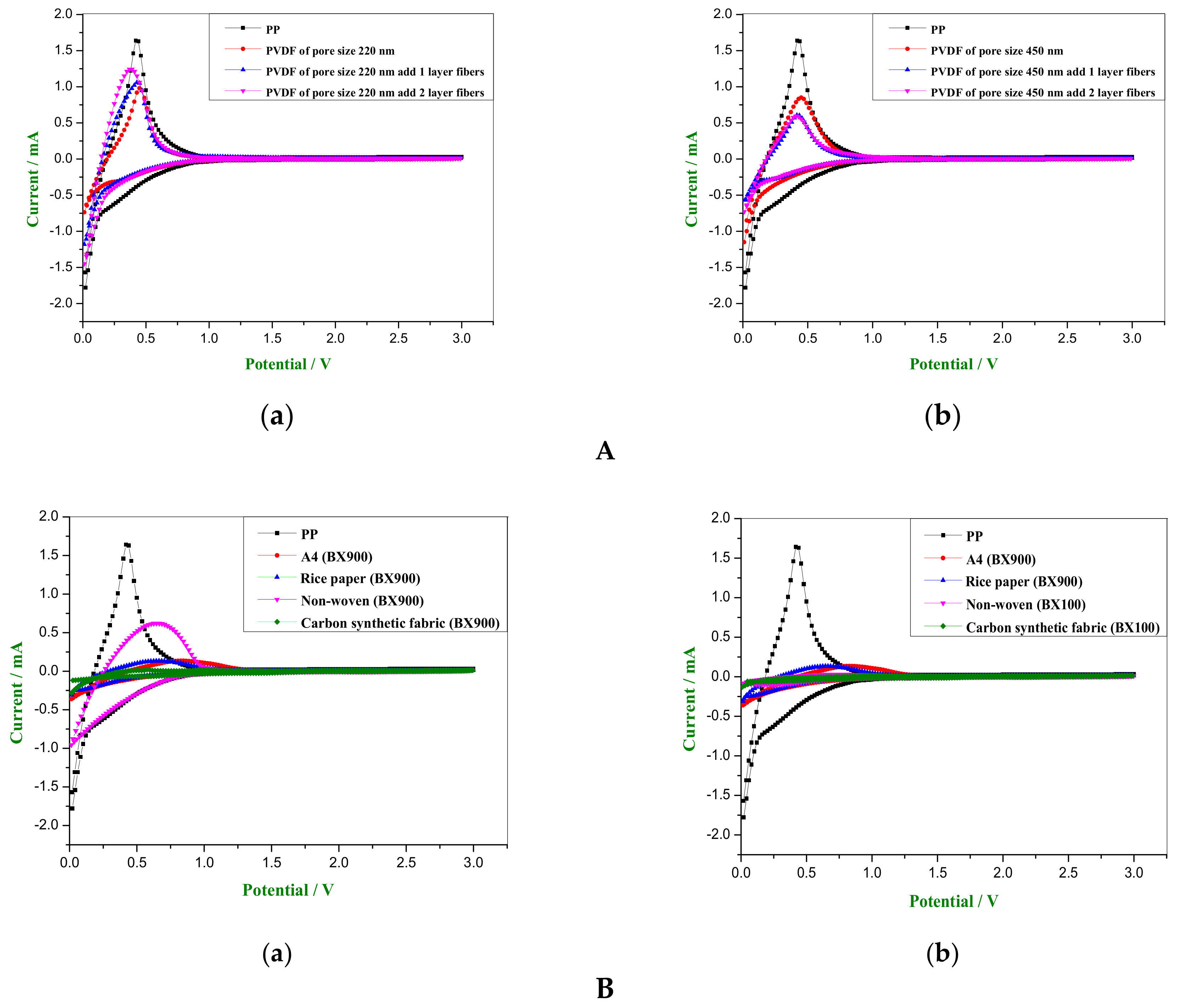
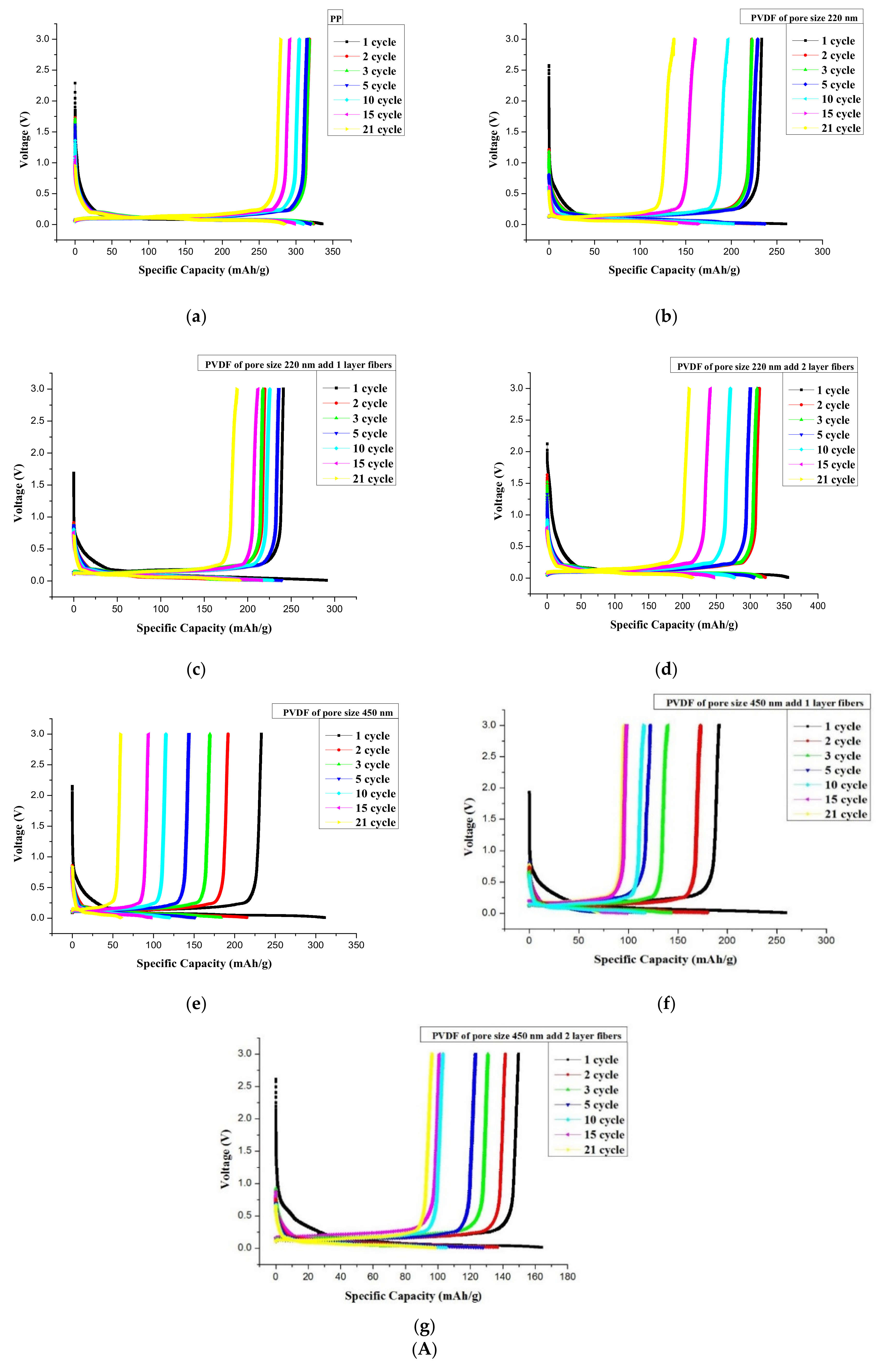
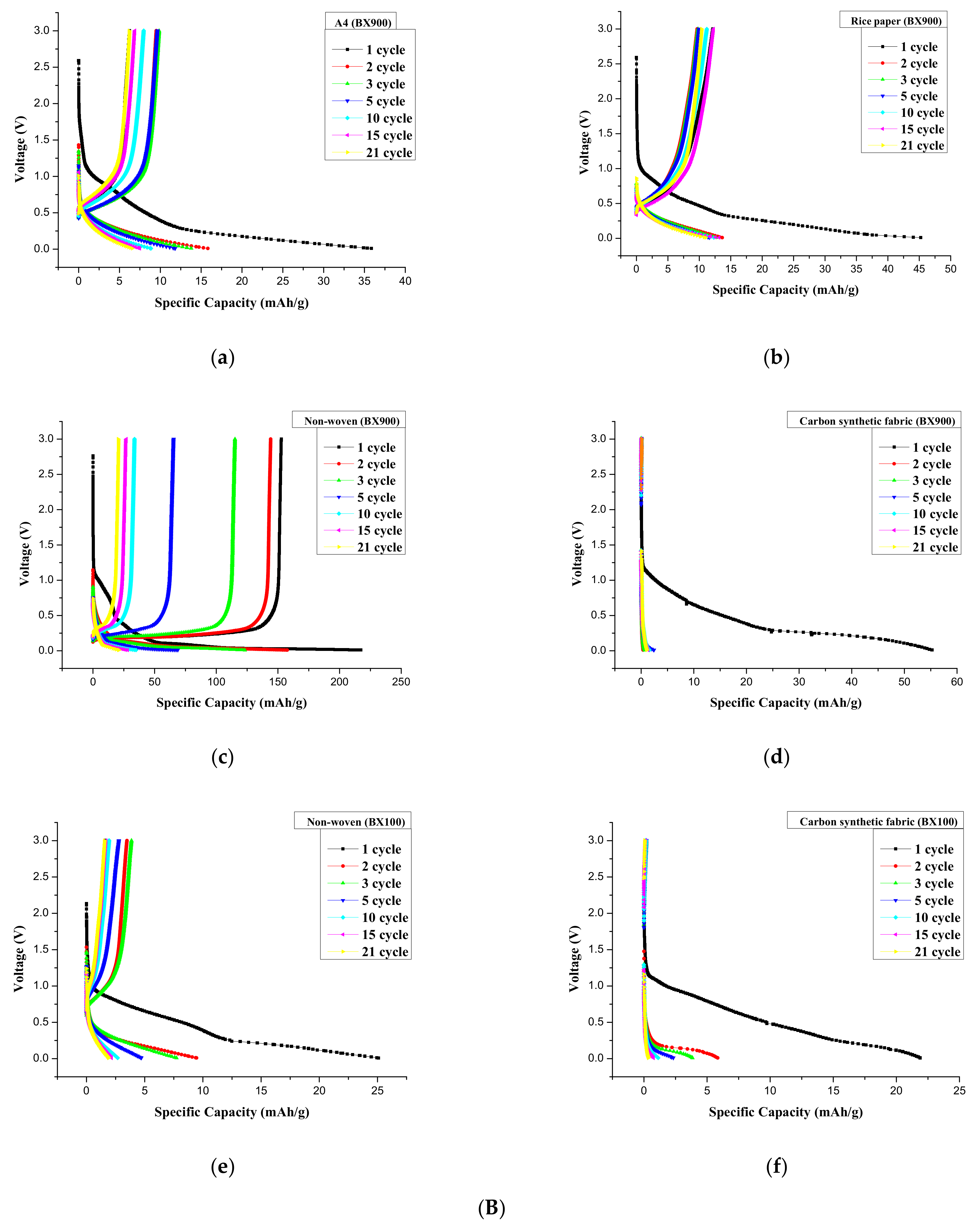
| Chemical | Formula | Molecular Weight (g/mol) |
|---|---|---|
| PVDF | (C12H13NO3)n | 534,000 |
| DMSO | C2H6OS | 78.13 |
| Acetone | C3H6O | 58.08 |
| Surfactant | C12H25NaSO4 | 288.378 |
| Solution A | Solution B | ||
|---|---|---|---|
| PVDF powder (g) | Acetone (g) | DMSO (g) | Surfactant (g) |
| 0.90 | 2.50 | 2.50 | 0.20 |
| Equipment Part/Aspect | Parameter |
|---|---|
| Needle size | Length, 12.7 mm; inside diameter, 0.25 mm |
| Collecting distance | 1 mm |
| Tangential speed | 2618.10 mm/s |
| Pump feed rate | 0.15 mL/h |
| Voltage field | 1.40 × 107 V/m |
| Separator | Tm (°C) | Crystallinity (%) | |
|---|---|---|---|
| PP | 164.8 | 33.33 | 16.1 |
| PVDF (220 nm) membrane only | 171.1 | 23.84 | 22.77 |
| PVDF (220 nm) with a monolayer of fibers | 170.7 | 22.18 | 21.18 |
| PVDF (220 nm) with a bilayer of fibers | 170.8 | 21.23 | 20.28 |
| PVDF (450 nm) membrane only | 171.0 | 21.16 | 20.21 |
| PVDF (450 nm) with a monolayer of fibers | 170.3 | 19.32 | 18.45 |
| PVDF (450 nm) with a bilayer of fibers | 171.1 | 23.1 | 22.06 |
| Separator | Thickness (μm) | Resistance (Ω) | Ionic Conductivity mS/cm (Error) |
|---|---|---|---|
| PP | 28 | 3.79 | 0.29 (−0.01–0.01) |
| PVDF (220 nm) membrane only | 128 | 7.62 | 0.66 (−0.02–0.02) |
| PVDF (220 nm) with monolayer of fibers | 144 | 12.88 | 0.44 (−0.04–0.02) |
| PVDF (220 nm) with bilayer of fibers | 161 | 11.06 | 0.57 (−0.01–0.01) |
| PVDF (450 nm) membrane only | 120 | 7.24 | 0.65 (−0.03–0.01) |
| PVDF (450 nm) with monolayer of fibers | 142 | 11.98 | 0.46 (−0.01–0.01) |
| PVDF (450 nm) with bilayer of fibers | 164 | 12.64 | 0.51 (−0.01–0.02) |
| Sample | Thickness (μm) | Resistance (Ω) | Ionic Conductivity (mS/cm) |
|---|---|---|---|
| A4 paper only | 105 | 26.78 | 0.15 |
| A4 (with BX100) | 142 | 208.75 | 0.026 |
| A4 (with BX300) | 120 | 139.49 | 0.034 |
| A4 (with BX900) | 117 | 92.99 | 0.049 |
| Rice paper only | 86 | 7.10 | 0.48 |
| Rice paper (with BX100) | 102 | 32.39 | 0.12 |
| Rice paper (with BX300) | 105 | 59.33 | 0.072 |
| Rice paper (with BX900) | 89 | 22.13 | 0.16 |
| Nonwoven fabric only | 211 | 21.42 | 0.39 |
| Nonwoven fabric (with BX100) | 365 | 47.70 | 0.30 |
| Nonwoven fabric (with BX300) | 349 | 26.20 | 0.52 |
| Nonwoven fabric (with BX900) | 347 | 14.30 | 0.96 |
| Carbon Synthetic fabric only | 327 | 57.93 | 0.22 |
| Carbon synthetic fabric (with BX100) | 452 | 48.36 | 0.36 |
| Carbon synthetic fabric (with BX300) | 445 | 47.07 | 0.37 |
| Carbon synthetic fabric (with BX900) | 430 | 36.26 | 0.47 |
Publisher’s Note: MDPI stays neutral with regard to jurisdictional claims in published maps and institutional affiliations. |
© 2021 by the authors. Licensee MDPI, Basel, Switzerland. This article is an open access article distributed under the terms and conditions of the Creative Commons Attribution (CC BY) license (http://creativecommons.org/licenses/by/4.0/).
Share and Cite
Francisco, M.D.; Pan, C.-T.; Liao, B.-H.; Wu, M.-S.; Yang, R.-Y.; Chu, J.C.; Wen, Z.-H.; Liao, C.-F.; Shiue, Y.-L. Fabrication and Analysis of Near-Field Electrospun PVDF Fibers with Sol-Gel Coating for Lithium-Ion Battery Separator. Membranes 2021, 11, 186. https://doi.org/10.3390/membranes11030186
Francisco MD, Pan C-T, Liao B-H, Wu M-S, Yang R-Y, Chu JC, Wen Z-H, Liao C-F, Shiue Y-L. Fabrication and Analysis of Near-Field Electrospun PVDF Fibers with Sol-Gel Coating for Lithium-Ion Battery Separator. Membranes. 2021; 11(3):186. https://doi.org/10.3390/membranes11030186
Chicago/Turabian StyleFrancisco, Mark D., Cheng-Tang Pan, Bo-Hao Liao, Mao-Sung Wu, Ru-Yuan Yang, Jay CJ Chu, Zhi-Hong Wen, Chien-Feng Liao, and Yow-Ling Shiue. 2021. "Fabrication and Analysis of Near-Field Electrospun PVDF Fibers with Sol-Gel Coating for Lithium-Ion Battery Separator" Membranes 11, no. 3: 186. https://doi.org/10.3390/membranes11030186
APA StyleFrancisco, M. D., Pan, C.-T., Liao, B.-H., Wu, M.-S., Yang, R.-Y., Chu, J. C., Wen, Z.-H., Liao, C.-F., & Shiue, Y.-L. (2021). Fabrication and Analysis of Near-Field Electrospun PVDF Fibers with Sol-Gel Coating for Lithium-Ion Battery Separator. Membranes, 11(3), 186. https://doi.org/10.3390/membranes11030186








